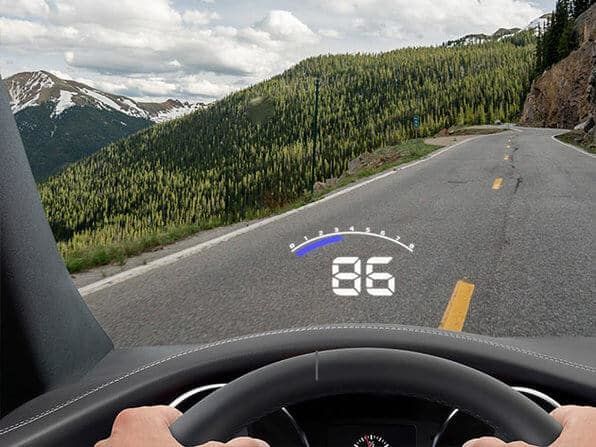
The right car must-haves are essential in the event you have to travel. For safety and comfort, you will need a dashpad, Jumper cables and leakproof car trash bags. Also, a CD player or DVD player is essential if you need to rush. There are many factors to consider when buying your car.
Dash pad
It is important to keep your car looking its best. A damaged dashpad can be very noticeable. However, a new dash pad can help restore the original look of your car. Top Flight Automotive sells replacement and reproduction dash pads for C1 and C2 Corvettes. This company pays attention to the dimensions and contours these classic cars in order to make dash pads that are compatible with stock car setups. These products are pre-cut with mounting clips so they will fit snugly.
Suede dashboard covers add a luxurious look to any vehicle. Suede dashboard covers are treated to maintain their fine sheen even in the harshest of sunlight. They're easy to remove, too, which makes them an excellent choice for those with dirty hands. Available in real or imitation suede, both the pads can be removed easily. Both styles offer the same feel.

Jumper cables
If you have ever had a dead vehicle battery, you will know how important it can be to have a pair jumper cables. These cables are very affordable and can save your life when you need to jumpstart your vehicle. There are different gauges available for jumper cables. Each is made to provide power to different vehicles. A 10-gauge jumper cable should be sufficient for most cars. But if you own a large SUV or a truck with a larger battery, you'll need a higher-gauge jumper cable. Be sure to follow the instructions provided with your cables.
In the event that your battery runs out, you might need to assist a stranger. Jumper cables, which cost only $10, are a great and inexpensive way to help someone who is in dire need. This is a valuable skill. The Krieger cables come with a 5-year warranty, while DieHard offers a 30-day guarantee. Jumper cables offer a way to remain safe and have fun while driving.
Bag for car trash that won't leak
You don't need to be worried about leaks anymore thanks to the leakproof car trash bag. It has a waterproof lining which keeps your waste contained. It is lightweight and portable, so you can take it with you wherever you go. It prevents odors and ensures your car is as clean as possible. You'll want to make sure your car has a leakproof trash container if you have kids.
These bags can be used quickly and easily. They are lightweight and fit well on most vehicle seats. You can store anything in these bags and they will not leak. These bags can also be used as travel coolers and storage bags. They come with adjustable straps and an interior fabric pocket. These bags are made of Oxford fabric, which can hold up three plastic bags. The bag is easy-to-install and can be mounted almost anywhere in your car.

Clip-on rearview mirror
A car's safety equipment is complete without the clip-on backview mirror. The mirror's anti-glare coating protects against glare, distortion and double reflections. It is also easy to mount. Some models come with a protective backing to prevent scratches and dents. Many models can be used with them, so it is a worthwhile investment. No matter what car you drive, a clip on rearview mirror can give you peace-of-mind.
It is essential to compare prices before making a purchase, and make sure you choose one that fits the size of your vehicle. Because prices for similar products could vary dramatically, it is worth shopping around before you make a decision on a pricing. You'll need to buy a mirror that matches the size and specs of your vehicle, otherwise you may end up with a faulty product. Additionally, you may need to buy additional hardware, such as adhesive, in order to install it properly.
FAQ
What is the best way to learn about car mechanics
Auto mechanics don't require any knowledge. Only you need to know how things work. Most people begin by changing brake pads and tires, before moving on to more complicated repairs.
It is important to be able to read and understand diagrams as well as written instructions. You must also be able judge if parts need to replaced or repaired.
It is important to remember that proper training and guidance are essential for anyone who attempts to repair vehicles. This is especially important if you work with expensive parts such as transmissions or engines.
Even though you won’t need to know much more about cars, you will still need to have an in-depth understanding of mechanics and physics. This involves understanding how engines work and how brakes work.
It is important to realize that you must be ready for all types of situations. For instance, you might find yourself in charge of a vehicle that has been in a serious accident. Additionally, you will need to have experience with handling accidents and breakdowns.
Finally, you must be willing to learn new skills quickly. Not only will you need to be capable of diagnosing problems, but you also need to be able perform simple maintenance tasks like tightening nuts.
How long is an automotive mechanic apprenticeship
A three-year apprenticeship in automotive mechanics takes. This includes two year at school as well as two years as an apprenticeship. The first year is spent learning all aspects of the trade, including theory, practical skills, and safety procedures. You will also learn to use tools efficiently and safely during this period. After the first year, a second year will be spent on-thejob training. This year you'll get experience in different trades. These periods will also give you the chance to take formal courses.
The final year of this program is spent in obtaining qualifications and becoming certified in your field. These include NVQs, which are obtained after passing industry-specific exams. You can also get HNCs (Higher National Certificates), that cover subjects such as customer service, business administration, management, and business administration. City & Guilds certificates may be available for those who are interested in becoming qualified in specific trades.
What is the job description for a mechanic in a car?
There are three main areas of employment for car mechanics:
-
Automotive repair shops
-
Dealerships
-
Independent garages
Automotive repair shops
Most people think of this as the first step to becoming a mechanic. In fact, it's probably the easiest way to get started. You can either work at a shop owned by someone else or set up your own business.
If you choose to work at a store, you need to join a union. Once accepted into the union you will be trained by the union.
Once you complete the training, it's time to get started.
If you decide to open your own garage, you'll need to register with the government. You'll need to meet certain standards after you register.
You will receive a license to run your garage once you have registered.
Your license will permit you to sell spares parts and perform minor repairs. It won't permit you to fix serious engine problems.
In addition to selling spare parts, you'll also be expected to offer advice and guidance to customers.
Dealership jobs
Most dealerships only employ mechanics who have a specific skill set. For instance, they may only be qualified to fix brakes or change tires.
Some dealerships have the option to hire general mechanics who can take care of all aspects.
These positions often require applicants that they undergo special training before being allowed work. This allows employers to select the most qualified candidates for their roles.
Some dealerships will even hire graduates right out of university. These graduates have no difficulty learning about cars because they already know the basics and principles of mechanical engineering.
Independent garages
Independent garages are not associated with any one dealership. They are more focused on providing top-quality service.
Independent garages are not associated with any companies so they can afford higher wages. This means that these jobs are usually more lucrative than those at dealerships.
Independent garages can be just as good places to work, but this does not mean they are better. Many business owners prefer to manage their own businesses rather than delegating responsibility to others.
You may find yourself working for long hours and not having control over the day.
Also, expect to make lower wages than if your job was at a dealership.
The good news? You can easily switch between different types of jobs. If you want to work at a dealership, then you simply need to ask your current employer if he would consider hiring you as a mechanic instead.
Or, if your dream is to work for an independent garage you can contact the owner directly.
Finding a new job is not always easy. You can earn more depending on many other factors.
This could include the type of vehicle that you are working on and whether or not you charge an additional for labor.
Does it matter where I go to college?
It's not true. There are no differences between colleges when it comes to getting into the automotive industry. But, there are better programs at some schools than others. Look elsewhere if you want something more niche.
How do I fix my vehicle as a hobby?
Take up a hobby in car repair if you have an interest. You can learn to fix them, buy them parts, and even sell them. This would be a wonderful hobby if you're looking to find something completely different.
It's difficult to make this a fulltime job. It takes a lot of dedication and hard work. And you'll need to invest a lot of money too.
So unless you have a good reason for wanting to get involved with cars, then it might be best to leave it alone.
How can I prepare myself for a mechanic apprenticeship
Understanding what you're getting into is crucial. You should be familiar with the mechanics of cars, and how they work. This will allow you to be prepared for your first day at work.
Also, you need to know how fix simple problems, such as tires and lights that aren't working.
This article will show you how to diagnose and fix issues.
It is also important to know how the different pieces fit together in order to put them together again.
Finally, you need to be able to safely and efficiently use tools.
All these aspects will help you become a competent technician.
Statistics
- The U.S. Bureau of Labor Statistics (BLS) reports that the job outlook for automotive service technicians and mechanics is expected to decline by 4% from 2019 to 2029. (indeed.com)
- According to the BLS, total auto technician employment is expected to exceed 705,000 by 2030. (uti.edu)
- Apprentice mechanics earn significantly less hourly than mechanics who have completed training, with a median wage of approximately $14.50 an hour, according to PayScale. (jobhero.com)
External Links
How To
How to properly diagnose your vehicle for repair
First, look at the symptoms of your car to determine if it needs repair. You can then follow these steps for a proper diagnosis of your vehicle.
-
Check engine lights. Check the dashboard light indicators such as the engine light indicator, the oil pressure gauge, the battery light indicator, the coolant temperature gauge, and the RPM gauge. If any of these indicators have been flashing continuously for several days it could mean that there is something wrong with your vehicle.
-
Check the treads of your tires. Tires with worn treads could cause problems when handling or braking. You should also inspect the wheel treads. You should ensure that they are clean and smooth. You can do this by taking off the wheels. A flashlight can be used to check how worn the treads are.
-
Check the level of brake fluid. You must keep track on the level of brake fluid in your vehicle. This helps ensure that your brakes operate properly. If your brake fluid level is low they might not work properly when you apply pressure.
-
You should test the suspension system. The suspension system in vehicles absorbs vibrations and shocks. It provides better control and allows smoother acceleration and deceleration. You might notice a wobbly feeling or uncontrollable shaking in your vehicle if it has a problem with its suspension. To determine whether your vehicle may have a suspension issue, you can try to put weight on the rear or front axle and watch the movement.
-
Examine the steering column. The steering column connects the steering wheel to all other components of the vehicle. Many accidents can cause damage to steering columns. You should replace the steering column if it is loose or weak.
-
Pay attention to the exhaust pipe. The exhaust pipes transport gases from the combustion chamber to outside. If the exhaust pipe is damaged or leaks, harmful fumes can enter your cabin. Additionally, your tailpipe should be fixed immediately if it is bent.
-
Look under the hood. Check under your hood for any unusual or missing components. Fluids could be leaking from your engine. In addition, if you notice an unusual smell coming from your engine compartment, you should contact a professional technician.
-
It is important to inspect the air filter. The outside environment can collect dust and other debris in your vehicle's air filters. Dirty air filters can cause your vehicle to run poorly. Replace your air filter regularly.
-
Make sure you check the fan belt. Your vehicle's fanbel connects the engine and transmission. If the fanbel breaks, your engine won't turn. Replacing the belt is simple. All you need to replace the belt is a screwdriver with pliers.
-
Verify the radiator hoses. The radiator-hose carries water to the engine. If the hose becomes damaged or cracked, hot liquid can be emitted onto the engine. The hose can be repaired with a pair or needle-nosepliers, and a wire brush.
-
Check the windshield wipers. Windshield wipers use electricity to wipe away rain and snow. They can leave streaks on your windows glass if they stop working. To fix the problem, simply change the washer fluid.
-
You should inspect the cables. Batteries provide power to electrical systems inside your car. Before you change batteries, disconnect the positive cable. Failure to do so can damage your alternator.
-
You should check the headlights. The headlights will illuminate the road ahead. Poor visibility can result if the headlights don't function properly. Inspect the bulbs for signs of burnt out.
-
Be sure to check the lights. The lights are there to warn other drivers if they approach you at night. If one doesn't work, it could distract you and lead to an accident.
-
Check your brakes. Before you collide with another vehicle, brakes will slow down the car. You could lose control of the car and cause a crash if they don't work properly.
-
Change your oil. The oilkeeps your engine lubricated. It helps keep metal parts from getting too worn down. It is recommended that the oil be changed every other month.